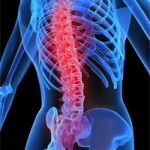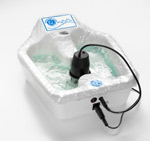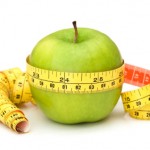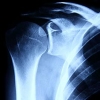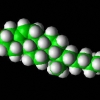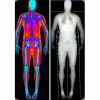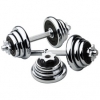To understand how Osteoporosis is a healing mechanism and not a disease, a brief history of the term “osteoporosis” is necessary. In 1830, French pathologist Jean Lobstein observed there were holes in the bones of some of the cadavers he was studying. And around that time, various researchers began to combine two Latin words to describe this condition: “osteo” meaning bone and “poros” meaning pore or hole. Together, the two words literally mean “porous bones,” describing weak and fragile bone that could fracture. You basically had to break a bone before you were diagnosed with the “disease”.
This changed in 1994 when the World Health Organization (WHO), under the direction of the UN, changed the description of osteoporosis from a disease of fractures to a disease of fracture “risks.” The organization also published its guidelines for what comprised a risk fracture, based on T scores derived from DEXA X-ray scanners. These scanners began to show up in greater numbers in medical clinics all over North America and due to their abnormally low levels for determining risks, almost overnight, 30% of all Caucasian females had a “risk factor.”
The WHO subsequently recommended bisphosphonates (drugs) as the first line of treatment for the disease; Fosamax was approved by the FDA and sales began to skyrocket. Last year, sales reached $3 billion dollars. These drugs not only have many well-documented adverse effects, but there is growing evidence they may actually cause bone to weaken after long-term (more than five years) use. This might be due to the drug’s hardening of the bone, where it becomes more brittle and prone to breaking. There are warnings from the US FDA noting the bisphosphonates may cause other fractures, like those of the femur.
The medical business, Big Pharma and the FDA have created a “disease” from a symptom. They endorse faulty diagnostics, promote a harmful cure and sell it to anyone who is taken in by their deceptions. They have created a nightmare for those caught in the web of deceit, drugs and false hope for healthier bones.
Basic bone information: Bones are living, active tissues that renew themselves via a process called remodelling. Hormonal cells called osteoclasts remove old bone from bone tissue, deposit it into the bloodstream for removal and create small holes in the process. Cells called osteoblasts then arrive with a “mortar” of calcium, minerals and collagen to fill in the holes. This is an ongoing process that peaks when we are in our twenties. It begins to slow down in our forties and can accelerate naturally as we age.
Osteoclasts and osteoblasts are activated by the parathyroid hormone (PTH), which signals osteoclasts to pull calciumfrom the bones. Calcitonin is the hormone that stimulates osteoblasts to deposit calcium into the bones. Osteoblastsmust be able to do their job effectively. Osteoblasts that are exhausted are one of the primary reasons for bone loss. Problems begin when the delicate balance between PTH and calcitonin is disrupted.
Bone loss can occur when the process of remodelling becomes dysfunctional. It affects one in four women over the age of 45 and one in eight men over 50. Here are some of the main reasons why we lose bone and some natural solutions to these problems:
Lack of magnesium: Calcitonin relies on magnesium to function properly. When we lack it, the balance between calcitonin tilts too far toward PTH. This results in excessive stimulation of the osteoclasts, causing calcium to be pulled from the bones. Most people are low in magnesium. The recommended intake is 500-900mg/day.
Excessive acidity (acidosis): If your diet contains too many acid foods such as meat, grains, bread, pasta, soft drinks, alcohol and coffee and not enough alkalizing foods such as green vegetables and fruits, your body starts to become acidic. As the blood needs to be slightly alkaline (approximately 7.3-7.4 PH), your body will pull calcium from the bones to neutralize the acid. This is one of the main reasons for “bone remodelling dysfunction” or BRD. BRD is the term I prefer to use to describe “porous bone.” To keep your body in a more alkaline state, a diet that consists of 70-80% alkaline foods and 20-30% acid foods is recommended. You can check your PH levels with pH strips purchased at health food stores; you can monitor saliva or urine. It is recommended that your pH be approximately 6.5 in the morning, 7.0 in the afternoon and 7.5 in the evening. This shows you have alkaline reserves for the body’s needs. We have seen bone density increase by over 20% with this strategy alone.
Low hormone levels: Bone requires an adequate supply of several hormones, such as parathyroid hormone, growth hormone, DHEA, calcitonin, estrogen in women and testosterone in men. As an example, cortisol is a stress hormone, produced when there is stress. It will pull calcium from the bones if there is not enough DHEA to counter balance its effect. The parathyroid regulates calcium in the body and if it becomes stressed will pull calcium from the bones. We have recorded a 10-pound bone loss due to the condition, which is known as hyperparathyroidism. Estrogen loss for females during menopause is another major factor, as estrogen protects the loss of calcium in the body. Women should begin to check their hormone levels starting in their early forties. For men, begin to check in the early fifties. This will give you a baseline for future reference and from which to monitor changes. Contact your primary care physician to coordinate these vital tests.
Low intake of the essential nutrients and bone builders: Attempt to have a diet that contains 20-30% protein, 30-40% plant-based carbohydrates, 15-20% good fats and 10-15% fibre. Enjoy your food and give yourself lots of good nutrition and energy. Strong bones require the following: Bio-available calcium three times per day (800-1,000 mg/day); Natural sources of vitamin D (sunshine) (800-2,000 iu/day); Phosphorous (800-1,200mg/day; Potassium, (4,000-6,000mg/day). In addition, manganese, silicon, zinc, strontium and vitamin K are also important.
The bone robbers: Avoid smoking and an excess of coffee, alcohol, stress, calcium from dairy sources (increases acidosis), salt, sugar, soft drinks and fluoride. Also avoid prescription drugs, even those endorsed by Health Canada for Osteoporosis. Some drugs actually contribute to fractures by killing the osteoclasts. This creates old, brittle bone that is prone to fracture. Femoral fractures are on the rise worldwide due to this misguided treatment. (For more information, search Google for Fosamax lawsuits.)
Not enough exercise: Exercise stimulates the osteoblasts to produce more bone. Just walking more will help and if you can do weight-bearing exercises, such as light weight training, you will help the bones greatly. Attempt to work out three times a week and vary your routine to avoid repetition, injury and boredom. Try to get outside and give yourself lots of fresh air and oxygen. You will feel better and more positive. You were meant to be active and to give your body the gift of lifelong activity. The main reason for BRD is due to the owner of those bones not providing the right ingredients for growth and maintenance of the overall body. If you do not provide your body with health enhancing nutrition, supplements, fresh air, exercise, sunshine and positive thoughts, your bone mineral supply may become depleted.
BRD is a short-term dysfunction that is actually a built-in healing and balancing system of the body. It gives priority to places or systems of the body that require minerals immediately. It “sacrifices” its minerals to these areas and then waits for its owner to replenish the storehouses. If the owner (you and I) does not provide the bones with what they need, the dysfunction continues and bones become weaker, less dense and more porous. Bones are the storehouses for energy for short-term repairs and balancing. They were not meant to provide long-term energy for the body. You, as its owner, must keep mineralization high in the bones to prevent the long-term results that we now define as BRD.
For many years, the definition and promotion of BRD was based on the following concept: Osteoporosis is a disease that causes weak and fragile bones that are prone to breaking. Other research has prompted a new definition: Bones lose density and become weak or fragile due to bone remodelling dysfunction (BRD), a short-term healing mechanism. This is caused by a variety of metabolic processes that contribute either individually or collectively to the decline of bone integrity.
BRD can be reversible, but it requires knowledge, a healthy diet and exercise plan, hormonal balancing and stress reduction. Above all, however, it requires a dedicated owner to take responsibility for the health of their bones. The earlier you start the better, so take care of your bones.
